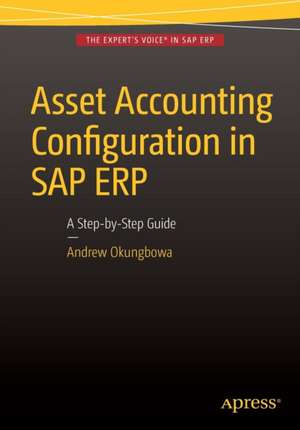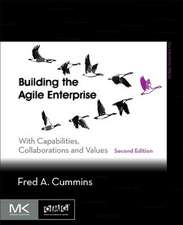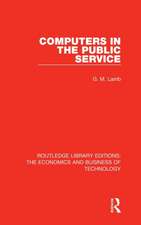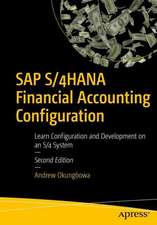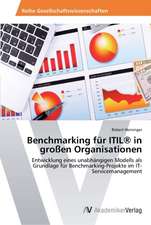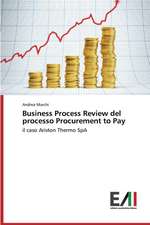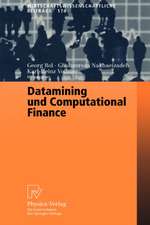Asset Accounting Configuration in SAP ERP: A Step-by-Step Guide
Autor Andrew Okungbowaen Limba Engleză Paperback – 29 dec 2015
Asset Accounting Configuration in SAP ERP fills that resource gap by covering the major aspects of SAP FI-AA for anyone with SAP experience and the basic accounting knowledge and bookkeeping skills necessary to apply configuration. It provides configuration explanations in the simplest forms possible and provides step-by-step guidance with illustrations and practical examples.
What You'll Learn
<
- In-depth coverage of FI-AA syllabus
- How to configure FI-AA accounting in SAP
- How to integrate FI-AA accounting with other SAP modules
- How to explain the functionalities of SAP FI-AA
- Knowledge gained from real-world practical examples and case studies
Who This Book Is For
The key target audience for this book includes SAP consultants, developers, accountants, support organizations and beginners. It is also a resourceful learning manual for universities and institutions whose curricula covers SAP-ERP Asset Accounting.Preț: 396.06 lei
Preț vechi: 495.08 lei
-20% Nou
Puncte Express: 594
Preț estimativ în valută:
75.81€ • 82.37$ • 63.72£
75.81€ • 82.37$ • 63.72£
Carte tipărită la comandă
Livrare economică 22 aprilie-06 mai
Preluare comenzi: 021 569.72.76
Specificații
ISBN-13: 9781484213667
ISBN-10: 1484213661
Pagini: 300
Ilustrații: XXIII, 322 p. 721 illus.
Dimensiuni: 178 x 254 x 23 mm
Greutate: 0.6 kg
Ediția:1st ed.
Editura: Apress
Colecția Apress
Locul publicării:Berkeley, CA, United States
ISBN-10: 1484213661
Pagini: 300
Ilustrații: XXIII, 322 p. 721 illus.
Dimensiuni: 178 x 254 x 23 mm
Greutate: 0.6 kg
Ediția:1st ed.
Editura: Apress
Colecția Apress
Locul publicării:Berkeley, CA, United States
Public țintă
Popular/generalCuprins
Chapter 1: Organizational Structure.- Chapter 2: Integration with the General ledger.- Chapter 3: Valuation.- Chapter 4: Depreciation.- Chapter 5: Special Valuation.- Chapter 6: Asset Mast data.- Chapter 7: Transaction.- Chapter 8: Validation and Substitution.- Chapter 9: Information system.- Chapter 10: Asset Data Transfer.- Chapter 11: Preparation for Production startup.- Chapter 12: Periodic processing.
Notă biografică
Andrew Okungbowa is an accountant, an expert in SAP FICO, and a trainer. He is currently SAP FICO senior functional consultant for Centrica PLC in the UK, specializing in the energy industry.
Textul de pe ultima copertă
In this book, noted expert Andrew Okungbowa explains SAP Asset Accounting (FI-AA) in SAP-ERP, including its associated business benefits, and guides you through the considerable complexities of SAP-ERP configuration. Using FI-AA for fixed asset management enables you to manage assets in multinational companies across a broad range of industries and produce reports to meet various needs in line with legal requirements. Configuring SAP-ERP can be a daunting exercise, however, and there are few resources that address these issues.
Asset Accounting Configuration in SAP ERP fills that resource gap by covering the major aspects of SAP FI-AA for anyone with SAP experience and the basic accounting knowledge and bookkeeping skills necessary to apply configuration. It provides configuration explanations in the simplest forms possible and provides step-by-step guidance with illustrations and practical examples.
In this book, you'll learn:
Asset Accounting Configuration in SAP ERP fills that resource gap by covering the major aspects of SAP FI-AA for anyone with SAP experience and the basic accounting knowledge and bookkeeping skills necessary to apply configuration. It provides configuration explanations in the simplest forms possible and provides step-by-step guidance with illustrations and practical examples.
In this book, you'll learn:
- The details of the FI-AA syllabus
- How to configure FI-AA accounting in SAP
- How to integrate FI-AA accounting with other SAP modules
- How to transfer asset data
- How to prepare for startup and perform periodic processing
Caracteristici
Asset Accounting Configuration in SAP-ERP is a timely, practical, and step-by-step illustrative guide to demystifying the complexities involved in SAP asset configuration.
